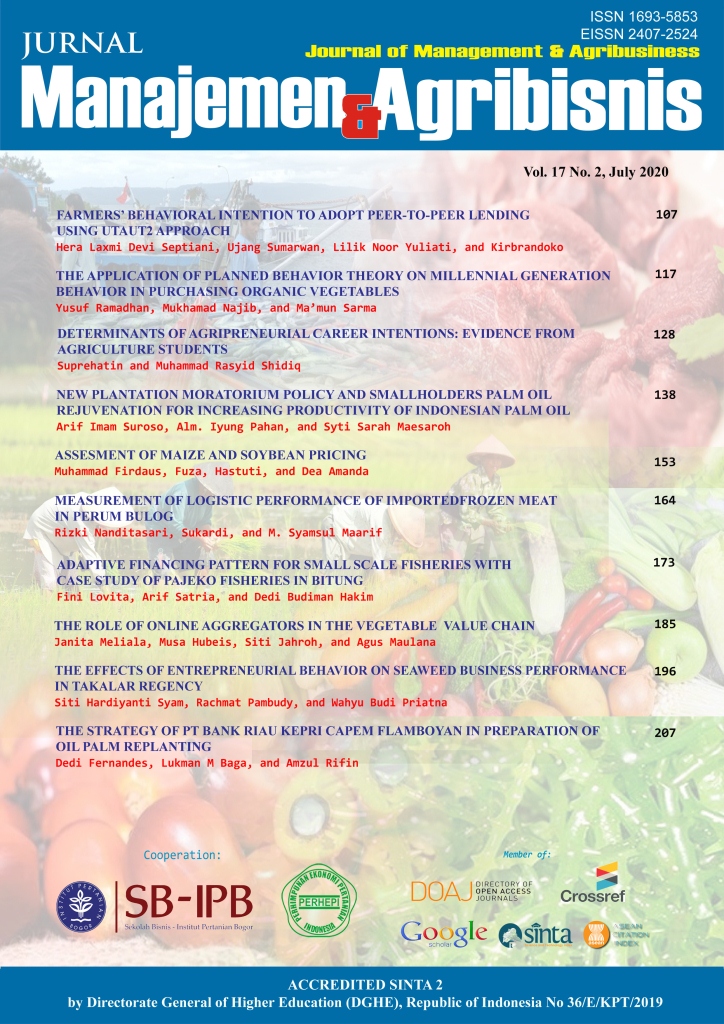Abstract
In Indonesia, many intermediaries of agricultural products are emerging as modern actors called business aggregators who utilize information from the internet or online technologies in their business activities. This study aims to analyze the activities and roles of online aggregators (based on information technology) in the order of value chains of agricultural products, especially vegetables. Purposive sampling technique was used in selecting 12 online business aggregators of vegetable products. Data were obtained through Focus Group Discussions and in-depth interviews with the business aggregator online owner. Based on the results of the analysis show that the main activities of the aggregator business value chain that are divided into three value chains, namely input provider, processing and marketing providers. Online aggregators become important actors in the agribusiness system in the future. In conventional agribusiness systems, non-online aggregators, whose position is in the subsystem, downstream agribusiness, but in online aggregator at present with the advancement of internet, the aggregator is in the middle/middle, between upstream, cultivation, downstream and supporting institutions subsystems.
Keywords: intermediaries, online aggregator, vegetable products, value chain
Authors
Authors who publish with this journal agree to the following terms:
- Authors retain copyright and grant the journal right of first publication with the work simultaneously licensed under a Creative Commons Attribution License that allows others to share the work with an acknowledgement of the work's authorship and initial publication in this journal.
- Authors are able to enter into separate, additional contractual arrangements for the non-exclusive distribution of the journal's published version of the work (e.g., post it to an institutional repository or publish it in a book), with an acknowledgement of its initial publication in this journal.
- Authors are permitted and encouraged to post their work online (e.g., in institutional repositories or on their website) prior to and during the submission process, as it can lead to productive exchanges, as well as earlier and greater citation of published work (See The Effect of Open Access).

